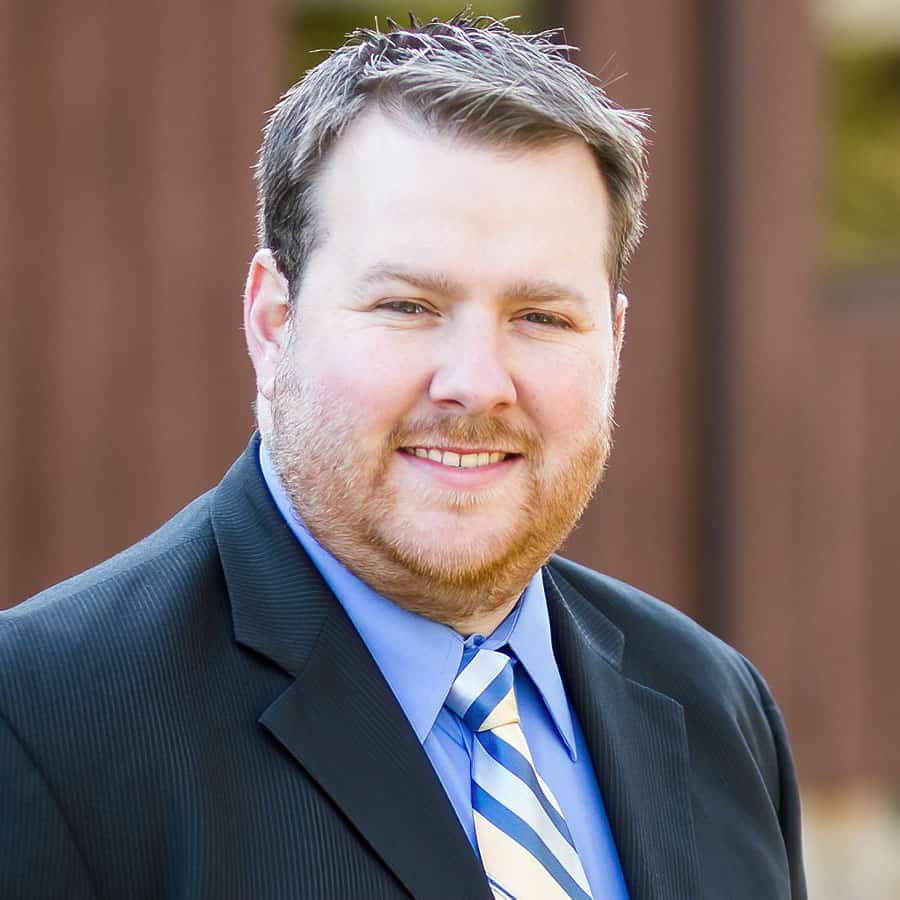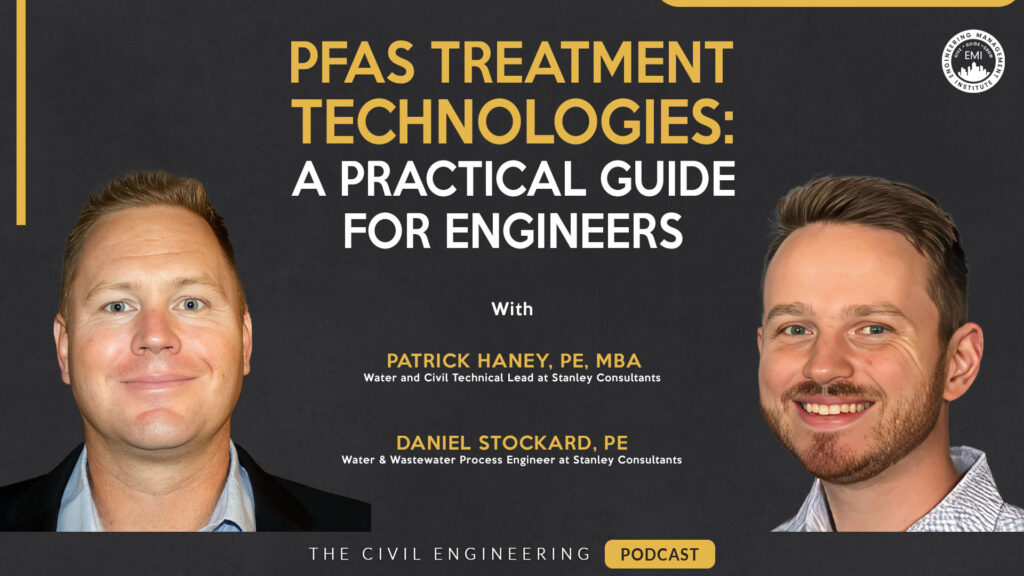In this episode, I talk with Patrick Haney, PE, MBA, water and civil technical lead, and Daniel Stockard, PE, water, and wastewater process engineer from Stanley Consultants, about the latest PFAS treatment technologies, cutting-edge innovations in water purification, and the complex financial and technical hurdles utilities face in tackling these persistent forever chemicals.
***The video version of this episode can be viewed here.***
Engineering Quotes:
Here Are Some of the Questions I Asked Patrick and Daniel:
- What are PFAS chemicals, and why are engineers so focused on them right now?
- Which industries or types of property owners will be most affected by PFAS regulations?
- Are PFAS treatment technologies universal, or do they need to be customized for each site?
- What are the latest updates on PFAS water regulations, and how could they impact civil engineers and the industries they serve?
- What did your recent PFAS sampling project reveal about PFAS contamination?
- What EPA-approved PFAS testing methods are available for cities and treatment plants?
- What’s the difference between capturing and destroying PFAS, and how do site conditions influence the right approach?
- Since PFAS removal can be costly, what funding options are available for municipalities and utilities?
- What advice would you give civil engineers looking to stay ahead of PFAS-related regulations and water treatment challenges?
Here Are Some Key Points Discussed in This Episode About PFAS Treatment Technologies: A Practical Guide for Engineers:
- PFAS, also known as forever chemicals, are durable substances widely used in consumer products. Due to their resistance to degradation, PFAS contamination presents a serious environmental and public health concern.
- PFAS treatment technologies are not one-size-fits-all. Depending on site-specific water chemistry, engineers must design custom water treatment solutions that address both capture and destruction phases. Methods such as granular activated carbon (GAC) and ion exchange are common, but their effectiveness depends heavily on the local conditions of a given water system.
- PFAS contamination can spread rapidly through municipal water systems, wastewater treatment facilities, and stormwater networks. During rain events, spikes in contaminants like PFAS and heavy metals can overwhelm infrastructure, making robust PFAS treatment technologies critical for resilience.
- Regulatory frameworks are tightening. Federal PFAS drinking water limits are in effect, and state-level PFAS regulation updates are shaping project designs. For engineers, staying informed about changes is key, as these rules are likely to become more stringent.
- EPA-approved PFAS testing methods, including Method 537.1, are essential tools for accurate detection. These tests guide the implementation of efficient PFAS removal strategies that are both cost-effective and site-sensitive.
- Choosing between PFAS capture technologies and destruction methods depends on variables like contaminants load, water chemistry, and system capacity. While capture methods remove PFAS from the water, destruction technologies are applied to concentrated waste streams to eliminate PFAS entirely.
- Unfortunately, funding for PFAS water treatment remains a challenge. Most programs are tied to state budgets or legal settlements, meaning municipalities often must piece together financing without stable federal support.
- To succeed in this space, civil engineers should engage with professional associations, attend PFAS-focused seminars, and learn from peer experiences. Networking, continuing education, and sharing best practices are essential to navigating the evolving world of PFAS treatment technologies.
More Details in This Episode…
About Patrick Haney, PE, MBA

Licensed as a professional engineer in multiple states, Patrick specializes in water and wastewater treatment, infrastructure planning, and project execution. He holds an MBA from the W.P. Carey School of Business at Arizona State University and a BSCE in civil engineering from the University of Nebraska-Lincoln.
Passionate about innovation and leadership in water engineering, Patrick actively contributes to industry organizations, including the Water Environment Federation and the Central States Water Environment Association.
About Daniel Stockard, PE

About the Host: K. James Taylor, Jr., P.E.

James was selected as the 2021 Young Engineer of the Year by the American Society of Civil Engineers (ASCE) Delaware Section, and served as the President of the Delaware Engineering Society and the New Professionals Director on the NSPE Board of Directors from 2021-2023.
Sources/References:
Stanley Consultants
EPA
Clean Water Act
AWWA
WEF
Connect with Patrick Haney, PE, MBA, on LinkedIn
Connect with Daniel Stockard, PE, on LinkedIn
Please leave your comments, feedback, or questions in the section below.







